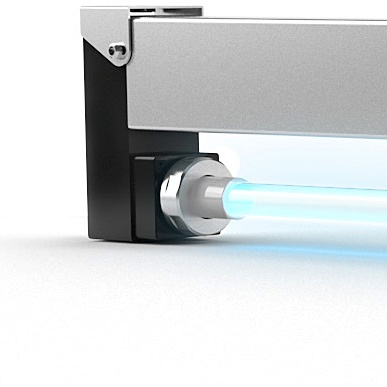UV-C Radiation
The UV-C wavelength and irradiance are decisive for the effectiveness of the output. While disinfection at 253.7 nm UV-C radiation is the most effective in killing harmful microorganisms via molecular lesions of DNA and RNA, disinfection at other wavelengths can be performed efficiently via various disinfection mechanisms such as cell wall degradation.
UV-C is the spectral portion of ultraviolet radiation that does not occur on earth, since UV-C radiation is almost completely absorbed by the earth's atmosphere. The UV wavelength ranges are divided up as follows:
- UV-C: 100-280 nm
- UV-B: 280-315 nm
- UV-A: 315-400 nm
UV-C radiation is the shortest wavelength and highest energy UV radiation. Due to the photon energies of UV-C radiation, it can cause strand breaks in the DNA by dissociation. Due to the particular "life hostility " of this radiation, technically generated or artificial UV-C radiation is used to combat pathogenic microorganisms such as
- Bacteria
- Viruses
- Mold
- Yeasts
- Spores
UV-C radiation takes effect in a few seconds. UV-C radiation has been successfully applied for more than 40 years and is used for an ever increasing range of applications.




